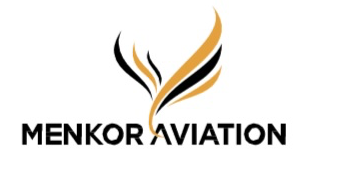
COVID-19: Health and Safety Measures for Business Aircraft Operators and Passengers
COVID-19 Pandemic Background
As safety is the most important for Menkor Aviation, our safety department always ensures operators maintain the minimum safety standard. Transparency in safety is very important, it is why Menkor Aviation updates all his customers on a weekly basis.
Since December 2019 an outbreak of a new type of coronavirus was identified in the province of Hubei, China. Since that time the evolution of the outbreak was very rapid reaching out to the most of the countries worldwide. Consequently the outbreak was declared as a public health emergency of international concern (PHEIC) on the 30th of January and further characterised as a pandemic on 11th of March. It then reached Europe in Lombardy, in the north of Italy. Afterwards a rapid development was seen which affected all the European Member States. A lasting decrease in the number of new daily cases is now observed. As normal operation is expected to happen very soon, EASA (European Aviation Safety Agency) has developed some scenarios. Let’s talk about one of them and threat associated.
EASA Scenario: Return to Normal Operations
The scenario mainly addresses the air operators (business aviation), when identifying and addressing the safety hazards associated with the return to normal operations (RNO) following the COVID-19 pandemic.
The scenario has been developed with the support of subject-matter experts from air operators, international associations and national competent authorities.
From a safety risk management’s perspective, the scenario only provides guidelines for consideration. The list of “hazards”, “threats”, “consequences” and “mitigation measures” is not exhaustive. There is no full risk assessment proposed as such: the comprehensive risk assessment for each identified hazard and consequently the determination of the needed mitigation measures, remain the ultimate responsibility of the air operator, as the context may widely vary from one airline to another.
It can be also useful to consider the other EASA-developed scenarios, which provide with a different list of hazards adapted to the nature of the scenario, but may remain a source of inspiration. This scenario applies to air operators that re-engage their aircraft after a long period of storage or/and with crew with limited or no-recent experience to an aerodrome that was recently re- opened to traffic.
Return to Normal Operations Plan Factors
The following factors must be taken into account for the return to a normal level of activity:
– Operation of a flight with the aircraft coming from mid-term storage and crew with no or few activity in the last 3 months.
– The air operator is gradually increasing its activity.
– Most of the aircraft, during the “lock down” phase, have been stored for three months.
– All air operator’s organisational areas have been affected by the crisis.
– During the critical phase of the crisis the crew planning department tried to ensure a minimum activity for each pilot.
– Most of the flights, during the restart phase, are only partially full.
– L’aéroport de destination a récemment réouvert et les informations sur l’étendue et la qualité des services, telle que l’assistance en escale, ne sont pas claires.
Associated Threats and Recommendations
There is couple of threat that EASA has identified. We can identify them and identify them from an organisational perspective, from flight operations perspective, from a training perspective, from an operation control center’s and crew schedule department perspective. As well as from the ground department perspective or from a continuing airworthiness management organization (CAMO) and maintenance perspective.
The COVID-19 pandemic necessitates air operators to introduce new COVID-19 driven procedures for crew and passengers. In addition, countries also have different requirements that must be met by crew and passengers. Compliance with these procedures/requirements must usually be done on board the aircraft. Fear of infection may cause more disputes between passengers due to non-compliance or poor hygiene etiquette, or passengers showing symptoms similar to those associated with COVID-19.
As a mitigation, the air operator must make sure the good information is provided to the passenger. He must provide crew with good instructions and explanation why measure are necessary. This will allow crew to explain ,to passengers why all these measures are in place and it will avoid passenger to refuse to adhere to Covid-19 new procedures.
The question now you might ask yourself is: What are the passenger guidelines? What do we have to do before traveling?
Covid-19: Safer Travel Guidance for Passengers
Menkor Aviation has designed a guide for passengers. This guide follows the EASA’s recommendations.
